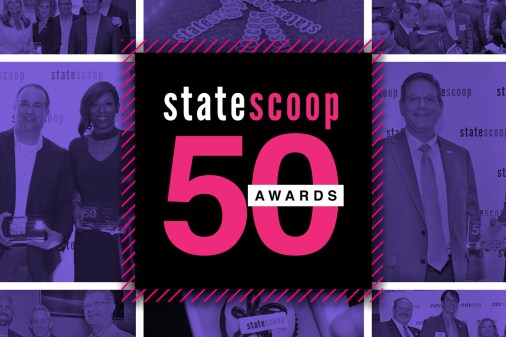Meet the StateScoop 50 GoldenGov Nominees: Montana CIO Ron Baldwin

For Montana Chief Information Officer Ron Baldwin, the key to successfully leading a state information technology division is collaboration.
In the last year alone, Baldwin’s state Information Technology Services Division partnered with the Governor’s Office of Economic Development and the Department of Administration to launch the state’s business portal, designed to connect businesses with government services. The state also formed an internal information sharing center to transfer cybersecurity threat data between law enforcement and state agencies.
The state also partnered with Oregon on a disaster recovery data center strategy, which was nominated for a StateScoop 50 award on its own.
For these collaborative efforts, Baldwin was nominated for a StateScoop 50 GoldenGov award, which highlights the visionary folks leading state government into a new technology future.
StateScoop talked with Baldwin about his work in Montana, his achievements over the last year and the challenges he faces in the state going forward.
Editor’s note: This interview was edited for clarity and conciseness.
StateScoop: Tell us about some of your main achievements over the past year that may have resulted in your nomination for a GoldenGov award?
Ron Baldwin: Recently, the Montana Business Navigator was unveiled by Gov. Steve Bullock in partnership with the Governor’s Office of Economic Development and the Department of Administration. This was a collaborative project to create efficiencies in doing business in Montana.
In addition, the Montana Information Security Advisory Council (MT-ISAC) was created by an executive order to advise the governor on cybersecurity issues. MT-ISAC membership represents state and local government, state legislature, universities, the U.S. Department of Homeland Security as well as private industry. The mission of MT-ISAC is to ensure that Montana’s information systems are safe, secure and resilient.
Virtualization is a recognized best practice that received a governor’s award for excellence in 2015. Significant savings and efficiencies have been realized through infrastructure sharing that is managed in the State’s data centers. Three hundred and thirty servers and 52 terabytes of data have been migrated into this environment. This was a multi-agency, collaborative effort. The annual cost savings will exceed $200,000. Participating agencies recognized included DOA, DLI, COR and DPHHS.
An Enterprise IT Financial Workgroup has been formed as a multi-agency governance forum that provides input and information for decisions impacting IT service offerings, including rate setting, utilization and cost recovery.
A five-year IT infrastructure plan was developed that identifies the tactical approach for the use of technology in the state. This plan identifies the capabilities that will be needed to continue to be a leader in providing services to the citizens of Montana. Finally, and notably, the National Association of State Chief Information Officers presented a Gold Medal Award for the Oregon-Montana Disaster Recovery Strategy, which includes the use of the State of Montana Data Center.
SS: What are you most proud of accomplishing during your time in your role? What’s still left to be done?
RB: Under Gov. Bullock’s leadership, transparency is just one area where Montana has made strides in bringing data to the people. With the creation of the state’s transparency portal, data portal and the business portal, citizens can access the power of data in government.
SS: What’s been the biggest challenge you guys have faced in the past year? How’d you overcome it?
RB: As we continue to invest in information technology that keeps pace with our global digital world, we also must invest in security to protect the data we are entrusted with safeguarding. Citizen data must be secured against the ever-increasing number and sophistication of cyberthreats. Addressing and overcoming cybersecurity is a national and state priority that requires a high level of collaboration and coordination.
In 2015 the Montana Information Security Advisory Council was formed. This is the first multi-jurisdictional forum of its kind in Montana, and it is already making progress in better securing the state from cyberattacks.
SS: Why public service? What lessons would you like to share with the next generation of state and local IT leaders?
RB: The world is experiencing exponential changes in technology in the digital age. From mobile devices and social media, to cloud computing and virtualization, information technology touches every aspect of our lives.
We are global citizens who are one tweet away from communicating instantly with our fellow citizens. The same access we have to each other is now expected in government. Online and mobile accessibility to government services and data is not only preferred, it is expected. Finding new and innovative ways to keep government accessible and transparent and secure need to continue to be high priorities for state and local IT leaders.
SS: What advice do you have for next year’s eventual class of GoldenGov nominees?
RB: Do work that is meaningful and impactful, work that helps connect people to information. Moving forward, information technology must continue to serve citizens in the secure, efficient and effective manner they expect.
This Q&A is part of a StateScoop series highlighting the nominees for the StateScoop 50 GoldenGov award. To vote for this nominee, and to vote in the other categories up for awards, go to the StateScoop 50 awards page. Winners of the StateScoop 50 awards will be announced on May 4.




